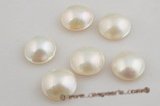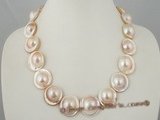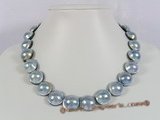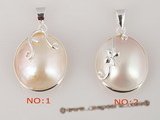Mabe Pearls are quite different from what you might consider “normal” pearls. The reason for this stems from the way that mabe pearls are formed. Mabe pearls are considered to be “semi-spherical cultured pearls”. Instead of growing inside the body of the mollusk creature, as is the case with other pearls, mabe pearls grow against the inside shell.
This process causes mabe pearls to have a flat side, as opposed to being relatively spherical, or at least rounded like standard pearls. This also explains why mabe pearls are frequently called “half pearls”. Mabe pearls are most frequently produced within saltwater oysters within the regions of Japan, Indonesia, Australia, and French Polynesia.
Mabe pearls come in a wide range of beautiful colors, which span from light pinks, to more bluish shades. The unique nacre of the mabe oyster allows for hues that are quite brilliant and rainbow-like. Their brilliance is quite breathtaking at times, especially in the rarest color, which consists of pink with gold swirls. It is this type of color which brings the value to the mabe pearls, as well as their rare superiority in texture and luster. Though they are quite lovely to look at, they will not be as expensive or valuable as “round” pearls due to the flat side.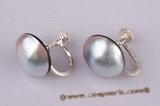
To culture a mabe pearl, the process is different than culturing round pearls. It is accomplished by inserting the nucleus flush against the side of the mollusk – which is the Mabe pearl oyster called Pteria penguin – causing the oyster to make its nacre deposits over the nucleus, and against the inside of its shell, forming a semi-spherical pearl. The Mabe pearl oyster, also referred to as the penguin wing oyster – is what is used as the mother shell for Mabe pearls. These are highly distributed across the world’s tropical and semi-tropical seas, making them readily available to many pearl farmers at different ends of the globe. Most commonly, however, the highest quality, most beautiful mabe pearls come from the Amami Ohima Islands off the southern coast of Japan, at the species’ most northern reach of distribution.
Due to this one flattened side, mabe pearls become the ideal choice for jewelry such as earrings and rings which allow for a secure setting, and a concealed flat back.
The mabe pearl first reached its popularity in the end of the 19th century, and from that time until the mid 20th century, many different efforts were made to attempt to cultivate the mabe pearl – most of which were in vein. Many hearts were broken, and most tries were fruitless. However, some pearl farmers continued to persevere with their research, and finally established breeding techniques for the mabe pearl oyster in 1970, followed five years later by the mass production of cultured pearl harvests.
Today, the production of cultured mabe pearls has become quite stable, and the results are absolutely gorgeous. Depending on the desired size, 2 to 6 years are needed for each pearl. However, for those who enjoy the mabe pearl, it’s well worth the wait.
More mabe pearl jewelry:
Mabe pearl necklace Grey Mabe pearl necklace Mabe pearl pendant
